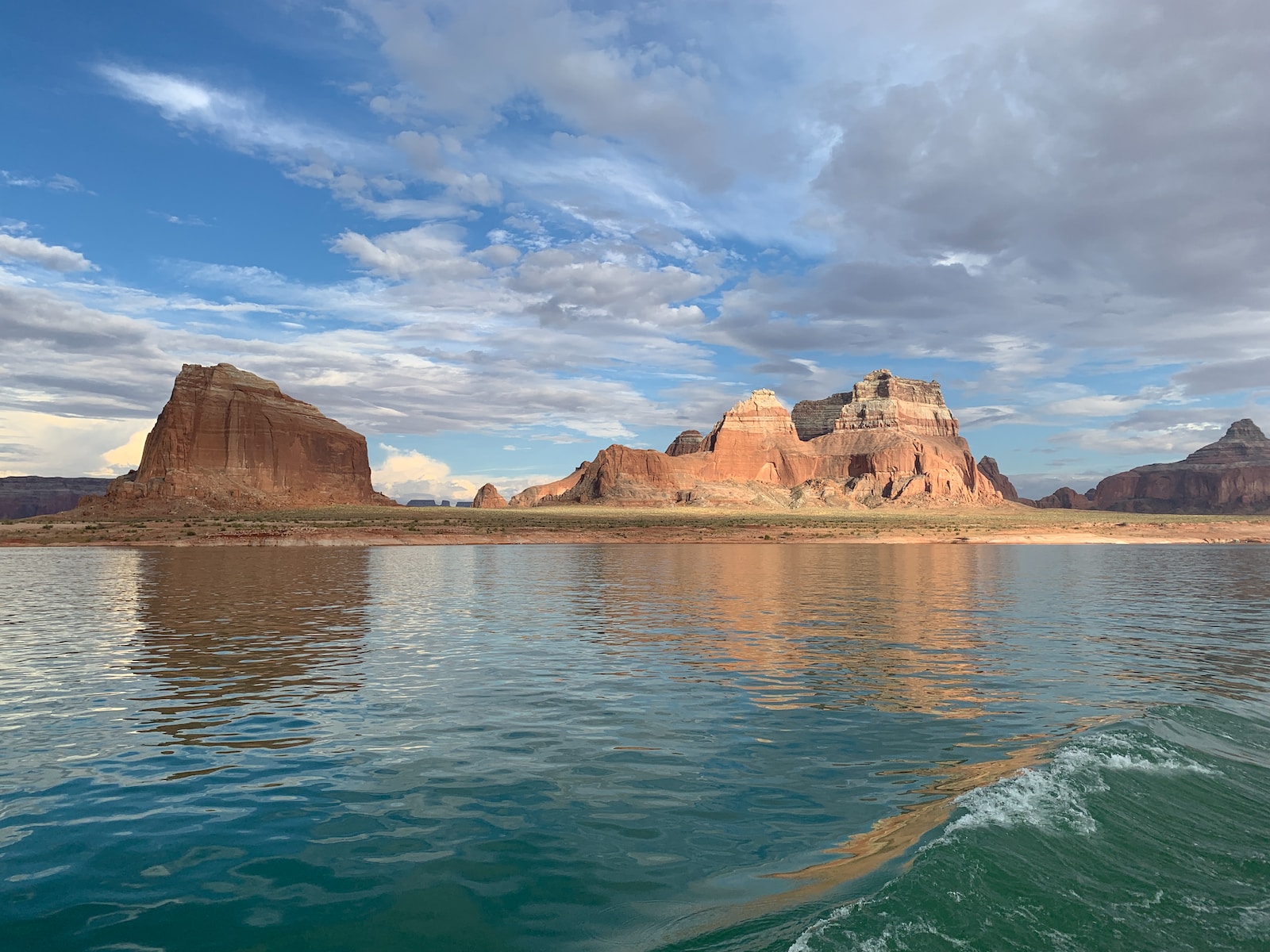Table of Contents
ToggleIntroduction
Lake Powell is one of the largest reservoirs in the United States, storing water from the Colorado River for millions of people in the Southwest. But it is also one of the most controversial, as it has caused environmental damage, water loss, and power generation problems. Some experts and activists have proposed a radical solution: draining Lake Powell and letting the water flow to Lake Mead, another reservoir downstream. In this article, we will explore the pros and cons of this idea and how it could affect the future of water management in the region.
The Problems with Lake Powell
Lake Powell was created in 1963 by the construction of Glen Canyon Dam, which flooded a scenic canyon and submerged thousands of archaeological sites. The dam was part of a massive water project that aimed to provide water and power to seven states and Mexico. However, over the years, Lake Powell has faced several challenges, such as:
- Water loss: Lake Powell loses about 860,000 acre-feet of water per year to evaporation and seepage into the porous sandstone walls of the reservoir. That is enough water to supply Los Angeles for 18 months.
- Environmental damage: Lake Powell has altered the natural flow and temperature of the Colorado River, affecting fish and wildlife habitats. It has also trapped sediment that would otherwise nourish downstream ecosystems and beaches.
- Power generation problems: Lake Powell’s water level has dropped significantly due to drought and overuse of the Colorado River. The current elevation is just a few meters from what is considered the ‘minimum power pool’ – the level at which Glen Canyon Dam is able to generate hydroelectric power. If the water level falls below this threshold, the dam could lose its ability to produce electricity for millions of customers.
The Benefits of Draining Lake Powell
Given these problems, some groups have advocated for draining Lake Powell and decommissioning Glen Canyon Dam. They argue that this would have several benefits, such as:
- Water savings: Draining Lake Powell would eliminate the water loss from evaporation and seepage, saving about 300,000 acre-feet of water per year. This water could be stored in Lake Mead instead, which has less surface area and less leakage than Lake Powell.
- Environmental restoration: Draining Lake Powell would restore the natural flow and temperature of the Colorado River, allowing fish and wildlife to recover. It would also release sediment that would rebuild downstream ecosystems and beaches. Moreover, it would expose the scenic canyon and archaeological sites that were flooded by the reservoir.
- Power generation alternatives: Draining Lake Powell would reduce the hydropower output from Glen Canyon Dam, but this could be compensated by increasing the efficiency of other dams on the Colorado River or by investing in renewable energy sources. In fact, some studies have shown that replacing Glen Canyon Dam’s power with solar or wind energy would be cheaper and cleaner than maintaining the dam.
The Challenges of Draining Lake Powell
However, draining Lake Powell is not a simple or easy solution. It would face several challenges, such as:
- Legal and political hurdles: Draining Lake Powell would require changing the laws and agreements that govern the allocation and management of the Colorado River among seven states and Mexico. This would involve complex negotiations and possible lawsuits among competing interests.
- Economic and social impacts: Draining Lake Powell would affect the tourism and recreation industry that depends on the reservoir. It would also affect the communities and businesses that rely on Glen Canyon Dam’s power and water. These impacts would have to be mitigated by providing alternative sources of income and compensation.
- Technical and logistical difficulties: Draining Lake Powell would take years to complete and require careful planning and coordination. It would also pose engineering challenges, such as how to deal with the sediment accumulation behind the dam or how to safely dismantle or bypass the dam structure.
The Future of Lake Powell
Draining Lake Powell is a controversial idea that has supporters and opponents on both sides of the debate. It is not a realistic option in the short term, but it could become more feasible in the long term if the drought persists and the water level continues to decline. In any case, it is a proposal that raises important questions about how we use and manage our water resources in a changing climate.
Conclusion
Draining Lake Powell is a bold and radical idea that challenges the status quo of water management in the Southwest. It has potential benefits for water conservation and environmental restoration, but also significant challenges for legal, economic, and technical feasibility. It is not a solution that can be implemented overnight, but it is one that deserves more attention and discussion as the water crisis worsens. Whether we drain Lake Powell or not, we need to rethink how we value and use our precious water resources in a sustainable way.
What do you think about draining Lake Powell? Do you think it is a good idea or a bad idea? Share your thoughts in the comments below.







